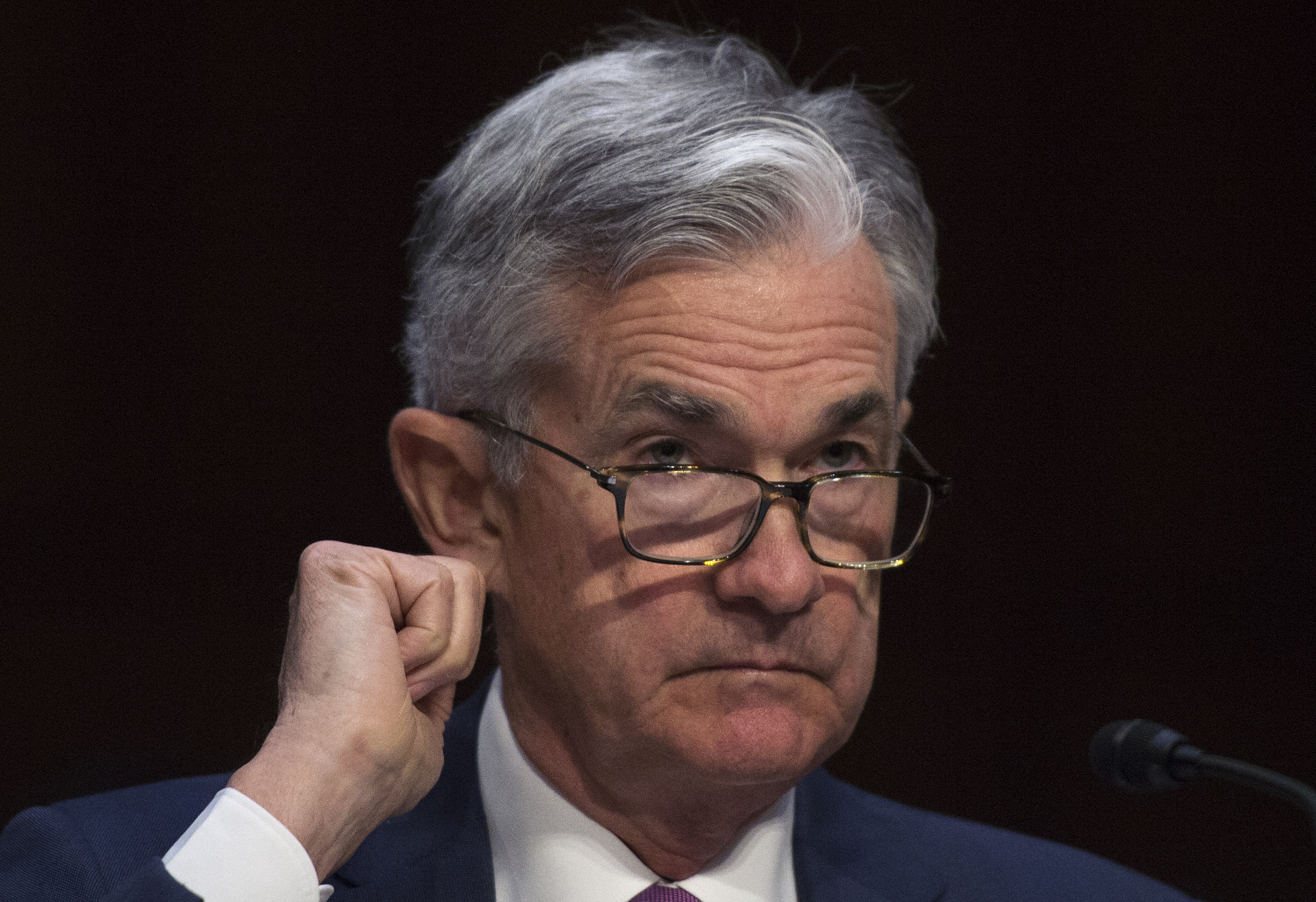Despite Trump rebuke, US Fed to continue steady course
US Federal Reserve Chairman Jerome Powell is expected to raise interest rates twice more this year (ANDREW CABALLERO-REYNOLDS)
Washington (AFP) – Despite booming second quarter growth in the US economy, the Federal Reserve will hold its fire and leave lending rates untouched this week as it awaits more signs of inflation.
But the central bank, which kicks off its two-day policy meeting on Tuesday, is still widely expected to hike interest rates twice more this year, as inflation mounts, the jobless rate falls and the economy continues to soar.
This plan of action has not gone over well at the White House, however.
President Donald Trump earlier this month publicly chastised the Fed for raising interest rates he says counteracts the economic benefits of tax cuts.
That political interference is casting a shadow over the meeting.
After boosting the benchmark lending rate in March and June, the US economy has continued humming, with inflation at last hitting the Fed’s two percent target rate.
Most economists say the central bank has every reason to stick to its current course of gradual increases, which has seen the federal funds rate rise seven times since December 2015.
Futures markets overwhelmingly expect rate hikes in September and December, with the probability only increasing after Friday’s blockbuster report that GDP grew 4.1 percent in the second quarter, the fastest pace in four years.
“At least right now, the economy still looks pretty strong, more than strong enough to keep the unemployment rate coming down,” Jim O’Sullivan of High Frequency Economics told AFP.
While most economists expect growth to slow in the rest of the year, O’Sullivan said “Momentum looks up and chances are momentum will only continue to look up if the unemployment rate continues to fall.”
Still, Trump told CNBC he was “not thrilled” about the Fed’s plans to continue tightening and took to Twitter to say America should be allowed to recoup the losses before rates rise again.
“Every time you go up, they want to raise rates again,” he told the network. “I am not happy about it. But at the same time, I’m letting them do what they feel is best.”
Cue the sound of breaking glass, with some observers accusing the president of brazenly trespassing on the Fed’s independence.
Economists solemnly warn that politicizing monetary policy invariably leads to misfortune. And the Federal Reserve is legally and fiscally separate from the federal government.
But Sarah Binder, a Brookings Institution expert on the politics of the Federal Reserve, said despite its legal status, the Fed sat at the center of the political system.
– But is it a norm? –
“Although we call it a norm, this expectation that the president is going to refrain and restrain himself from commenting on the Fed’s policies, it’s really just a short-lived practice,” she told AFP.
“In that sense, Trump is just joining the political fray.”
President Lyndon Johnson summoned Fed Chairman William McChesney Martin to his ranch after the Fed boosted rates in 1965.
Nixon bullied Martin’s successor, Arthur Burns, into holding rates low in the 1970s, ushering in the decade’s disastrous inflation.
More than 20 years later, President George HW Bush publicly called on Fed Chairman Alan Greenspan to cut interest rates — and later blamed Greenspan for his defeat in the 1992 elections.
It was only under President Bill Clinton that the Fed’s deliberations took on an air of inviolability.
“I don’t think we know enough historically about what difference presidential jaw-boning has done,” Binder said.
The Fed has not reacted to Trump’s comments, pointing reporters instead to earlier remarks by current Chairman Jerome Powell, who said central bankers kept political independence “deep in our DNA.”
And analysts warned that openly challenging the Fed’s independence could backfire.
Former Fed vice chair Alan Blinder told AFP he would have defied such interference.
“My attitude would have been, and I believe the attitude of most members of the Federal Open Market Committee would have been, to stiffen our backs and show that we’re not taking instructions from the White House.”
And Blinder said Trump’s interference could create static in the Fed’s efforts to signal its intentions to markets — which prevents undue turmoil when a new move is announced.
If the Fed is seen as yielding to Trump’s pressure or overreacting by tightening policy more, markets could begin to second-guess their motives.
“We don’t want either,” Blinder said. “It is foolish for the president of the United States to make their job harder.”
Evolving economic circumstances could prove especially challenging for the Fed with trade disputes creating uncertainty and raising prices, the housing market weakening, and consumer confidence cooling.
Add to this rising oil prices and sluggish wage growth, and central bankers could be left with hard choices.
Disclaimer: This story has not been edited by Siliconeer and is published from a syndicated feed. Siliconeer does not assume any liability for the above story. Validity of the above story is for 7 Days from original date of publishing. Content copyright AFP.


